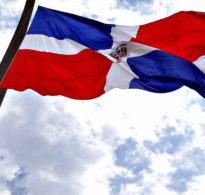Five Dominican Beaches Seek Blue Flag Certification
 | Five Dominican Beaches Seek Blue Flag Certification Five segments of our endless Caribbean beach destinations are seeking to obtain the prestigious Blue Flag Certification, becoming part of the select group of places throughout the world that enjoy this honor based on their excellent environmental, health and safety standards. “Today tourists know what the Blue Flag is and are expecting the beaches they visit to have this certification because when you see this you know the beach is being monitored and has fulfilled the criteria, parameters and that it operates under an exemplar code of conduct,” With the incorporation of Dorada Beach I and II (located in Puerto Plata), Cabeza de Toro Gran Oasis, Cabeza de Toro Sumscape and Cabeza de Toro Nature Park (in Bávaro, Punta Cana) the number of Dominican beach offerings jumps to eight with this important value added, according to the Ministry of Tourism. Currently the tourist locations that enjoy this certification are beaches that serve as sea side resorts to the Costa Dorada Iberostar and Costa Dorada Oasis Hotels in Puerto Plata and Dominicus Lake in Bayahíbe, La Romana. The beaches were recommended for the award by a national jury made up of various state organizations and coordinated locally by the non-governmental Dominican Institute for Environmental Law (IDARD). Vanessa Retif, coordinator of the International Blue Flag Program in our country, indicated that the candidates were chosen by a rigorous verification process that took into account the quality standards of the beaches as judged by four essential pillars: Water Quality, Environmental Education and Information, Environmental Management and Safety and Services. Certification Makes Beaches More Competitive Ms. Retif explained that the Blue Flag certification adds value to the beaches, improving their worth in the competitive tourism market. “Today tourists know what the Blue Flag is and are expecting the beaches they visit to have this certification because when you see this you know the beach is being monitored and has fulfilled the criteria, parameters and that it operates under an exemplar code of conduct,” said the specialist. Another positive aspect of the process is that “it promotes cooperation between the other sectors (property owners, vacationers, merchants and the authorities) in that the beach is an ecosystem” of vital importance within the tourism communities. The international jury will release its verdict about the beach certification this coming October or beginning of November. The jury is made up of representatives of the Environmental Education Foundation (EEF), the United Nations Environmental Program (UNEP), the World Tourism Organization (WTO), the European Union and the Organization for the Conservation of Beaches of the European Union. Locally the National Jury of the Blue Flag Program is made up of the Ministries of Tourism, Public Health and Education, the National Association of Hotels and Restaurants and organizations such as Civil Defense, the National Competitiveness Council (CNC), the National Aquarium, the Center for Marine Biology Research (CIBIMA-UASD) and officials from ministries that oversee Environmental Management and Coastal and Marine Resources. The Blue Flag award is a select environmental recognition bestowed upon more than 3,300 beaches and ports in 36 countries from around Europe, Morocco, South Africa, Canada, New Zealand and the Caribbean. The honor is given to beaches only in cases where they have complied with the demanding environmental requirements of safety and cleanliness. When a beach displays the Blue Flag, it means that it is clean, safe and constantly monitored in terms of its water quality and services. | |
| Dateof Publication: September 5, 2008 |

Related News
-
(Versión en español) ¡Captura la esencia del mar y únete al premio de fotografía franco-alemán Fotomar 2025!
-
(Versión en español) AMG MAG se hizo presente en ANATO 2025 con su cuarto número
-
(Versión en español) Francia se asocia a la celebración 2025 del mes de la Francofonía con un programa cultural y lingüístico diverso
-

(Versión en español) La Independencia Nacional: 181 años después
-

Actividad #1
Dónde:: Complejo Acuático Del Centro Olímpico Juan Pablo Duarte.
Días: 28 y 29 de noviembre 2016.
Precios: RD$1,1000.00 VIP, RD$600.00 gradas.

